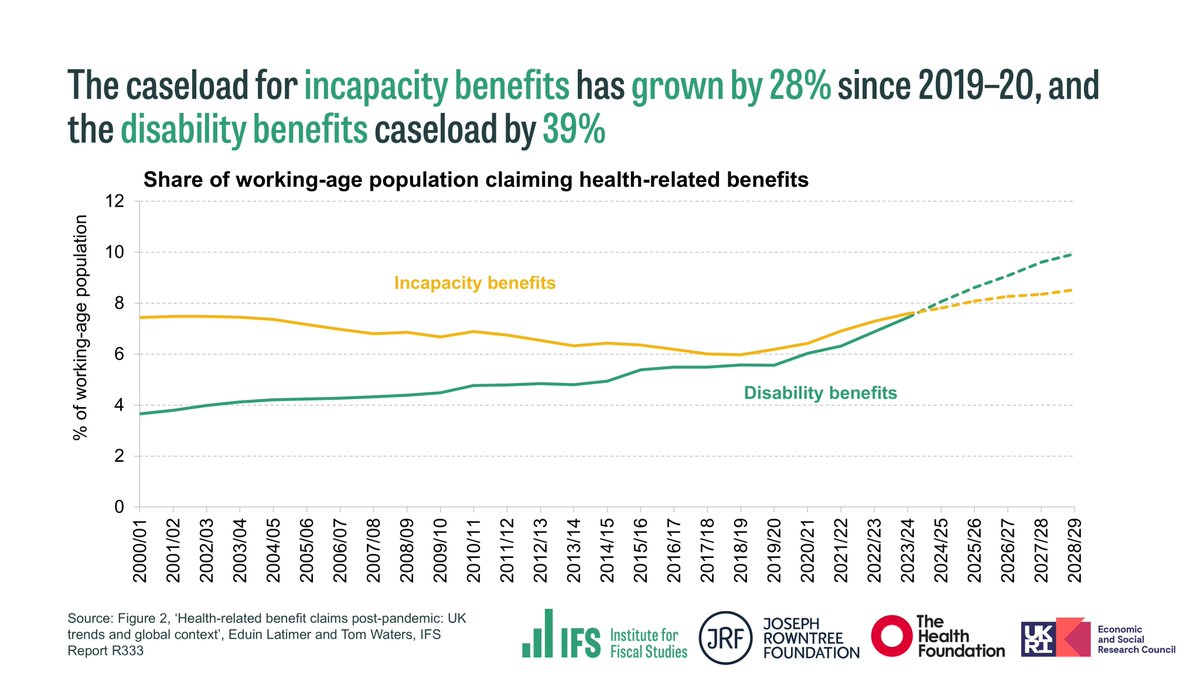Chancellor @KwasiKwarteng has promised a 'fully costed plan to get debt falling in the medium-term’.
But stabilising debt as a fraction of national income in 2026–27 would require a fiscal tightening of around £60bn on @Citibank’s central forecast.
[#IFSGreenBudget THREAD: 1/8]
But stabilising debt as a fraction of national income in 2026–27 would require a fiscal tightening of around £60bn on @Citibank’s central forecast.
[#IFSGreenBudget THREAD: 1/8]

Debt in our central forecast with @Citibank continues to rise throughout the forecast horizon, even once the big packages of support for rising energy prices are assumed to have expired.
[2/8]
[2/8]

Even once these support packages expire, tax cuts and a weak economic outlook would keep borrowing high.
While there’s uncertainty around the scale, under a central forecast in 2026–27 we expect borrowing of around £100bn, around £70bn higher than forecast in March.
[3/8]
While there’s uncertainty around the scale, under a central forecast in 2026–27 we expect borrowing of around £100bn, around £70bn higher than forecast in March.
[3/8]

We forecast spending on debt interest will be around £100bn next year, double @OBR_UK's March forecast (itself already an £13bn upwards revision).
This increase would partly dissipate if inflation falls back, but higher interest rates & debt levels will push up spending.
[4/8]
This increase would partly dissipate if inflation falls back, but higher interest rates & debt levels will push up spending.
[4/8]

Rising inflation is eating into departmental spending plans set out a year ago, but the government has stated that it will leave them unchanged despite rising pressures.
Making big additional cuts to already squeezed departments to stabilise debt would be far from easy.
[5/8]
Making big additional cuts to already squeezed departments to stabilise debt would be far from easy.
[5/8]
More growth would reduce the scale of fiscal tightening needed to stabilise debt.
But even if growth turned out to be 0.25 percentage points a year stronger than @Citibank expects, a fiscal tightening of around £40bn would be required to stabilise debt by 2026-27.
[6/8]
But even if growth turned out to be 0.25 percentage points a year stronger than @Citibank expects, a fiscal tightening of around £40bn would be required to stabilise debt by 2026-27.
[6/8]

The renewed focus on growth is welcome, but @OBR_UK has not historically incorporated hoped-for growth improvements into forecasts without concrete evidence of stronger growth.
Plans which rely on an unlikely uptick in growth are unlikely to impress financial markets.
[7/8]
Plans which rely on an unlikely uptick in growth are unlikely to impress financial markets.
[7/8]
“The Chancellor should not rely on over-optimistic growth forecasts or promises of unspecified spending cuts. To do so would risk his plans lacking the credibility which recent events have shown to be so important.”
Read our #IFSGreenBudget chapter> ifs.org.uk/publications/o…
[8/8]
Read our #IFSGreenBudget chapter> ifs.org.uk/publications/o…
[8/8]

• • •
Missing some Tweet in this thread? You can try to
force a refresh


















